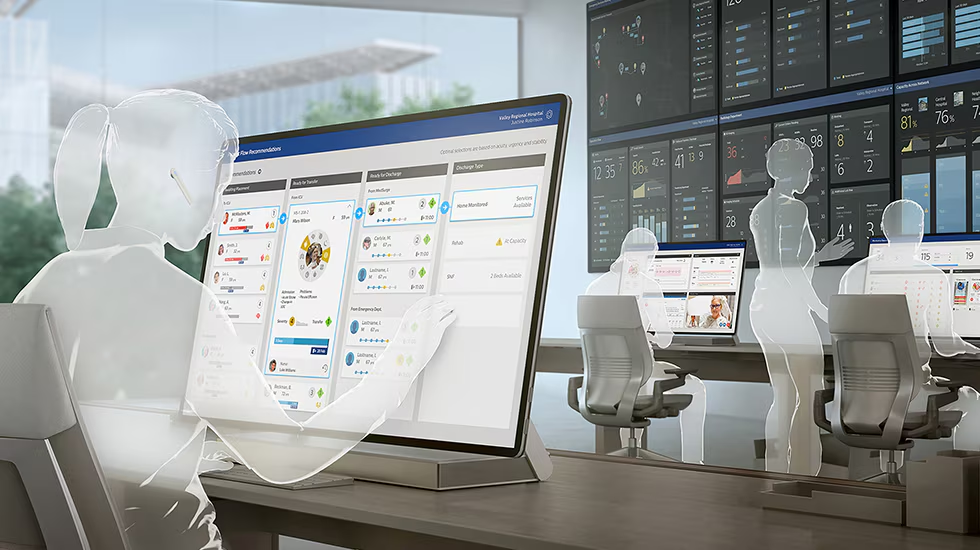The Power of “Click Here”: Understanding a Digital Age Command

Click here holds deep significance in user experience (UX), marketing strategy, and search engine optimization (SEO). This article explores the meaning, evolution, and modern relevance of “click here,” as well as the best ways to use it effectively in today’s digital world.
1. The Origins of “Click Here”
When the internet first began to expand in the 1990s, hyperlinks were the key to its functionality. These links allowed users to move seamlessly between pages—a revolutionary concept at the time. Early web designers realized that users needed guidance to understand how to interact with these new clickable elements. Thus, the phrase “click here” was born as a call-to-action (CTA), explicitly telling people what to do.
At that time, many users were unfamiliar with computers or web browsers. Telling them to “click here” was essential for usability—it explained the interactive nature of hyperlinks. The phrase became a universal instruction, appearing on countless websites and helping the first generation of internet users learn to navigate online spaces.
2. “Click Here” as a Call to Action (CTA)
Over time, “click here” evolved from a simple instruction to a marketing powerhouse. In digital marketing, a call to action is a phrase or button that drives users to take the next step—whether it’s buying a product, signing up for a newsletter, downloading an ebook, or visiting another page. The simplicity of “click here” made it a staple CTA, often appearing in phrases like:
- “To learn more, click here.”
- “Click here to subscribe now.”
- “Want to save 20%? Click here!”
These commands gave users clear direction and helped increase engagement rates. In many cases, the effectiveness of “click here” depended on context—the surrounding message, design, and intent.
However, as web users became more sophisticated, and as search engines began prioritizing relevance and accessibility, the effectiveness of “click here” started to change.
3. The SEO Problem with “Click Here”
From an SEO perspective, “click here” is one of the least descriptive anchor texts you can use. Anchor text is the visible, clickable text in a hyperlink, and search engines use it to understand the context of the linked page. For example:
- “Learn about our digital marketing services” tells Google that the linked page is about digital marketing services.
- “To read more, click here” gives no meaningful information about the destination.
Because “click here” doesn’t describe the content of the linked page, it provides no SEO value. In fact, using generic anchor text repeatedly can hurt your rankings by making your content appear less relevant or user-friendly.
Modern SEO best practices encourage the use of descriptive, keyword-rich anchor text that provides both users and search engines with context. Instead of writing:
4. Accessibility and User Experience (UX)
Another reason many web designers and content strategists avoid “click here” is accessibility. People using screen readers—assistive technologies that read text aloud—often navigate links separately from the main content. When a page includes multiple “click here” links, it becomes confusing because each one sounds identical, without describing its destination.
Accessibility guidelines recommend that link text should make sense out of context. For example, instead of:
“To view our privacy policy, click here.”
Use:
“View our privacy policy.”
This makes the web more inclusive for all users and aligns with modern UX design principles, which prioritize clarity and usability.
5. The Psychology Behind “Click Here”
Despite its drawbacks, “click here” continues to persist in digital marketing because it triggers an instinctive response. It’s direct, action-oriented, and clear. Psychologically, humans respond well to straightforward instructions, especially when browsing quickly or scanning content.
Marketers sometimes blend this instinctive appeal with more descriptive phrasing, such as:
- “Click here to start your free trial.”
- “Ready to grow your business? Click here to get started.”
- “Click here for exclusive early access.”
In these cases, the phrase acts as an emotional or visual cue rather than the core of the message. It works best when paired with strong persuasive context—offering a clear benefit or reward for clicking.
6. “Click Here” in Modern Digital Marketing
Even though best practices discourage overusing “click here,” it hasn’t disappeared entirely. In fact, when used strategically, it can still enhance engagement. For example:
- Email marketing: Short attention spans make direct commands effective. A “click here” button in a promotional email can drive conversions when paired with urgency (“Click here before the offer expires!”).
- Paid ads: The phrase can increase click-through rates (CTR) when it accompanies strong visuals or emotional triggers.
- Video or social media captions: Phrases like “Click here to watch the full video” or “Click here to see the results” can be effective in contexts where users expect direct instructions.
The key is balance—knowing when “click here” is appropriate and when a more descriptive, SEO-friendly phrase should be used.
7. Best Practices for Using “Click Here” in 2025
In today’s content-driven digital world, the smartest approach to “click here” is to use it purposefully and sparingly. Here are some modern best practices:
- Provide context first. Always tell users what they’re clicking for. For instance, “For a detailed pricing breakdown, click here.”
- Combine with benefits. Connect the phrase to a value proposition: “Click here to get your free demo today.”
- Prioritize accessibility. Avoid using “click here” as the only clickable text. Make sure the surrounding sentence explains the link’s destination.
- Optimize for SEO. Use descriptive anchor text wherever possible. If “click here” is used, balance it with contextual cues around the link.
- Design with clarity. Use color contrast, button shapes, or animations to make clickable areas obvious—so users don’t rely solely on the phrase itself.
8. The Future of “Click Here”
As technology evolves—especially with voice commands, AI chat interfaces, and touch-based devices—the phrase “click here” may gradually fade in everyday use. Voice search users don’t “click” anything; they say commands like “show me” or “open this.” Similarly, on mobile apps, gestures like swiping or tapping are more common than clicking.
However, the concept behind “click here”—inviting users to take action—will always remain vital. Whether it’s “tap to explore,” “swipe up,” or “learn more,” the idea of prompting engagement is timeless. The language may change, but the psychology stays the same.
Conclusion
“Click here” is more than a digital cliché—it’s a piece of internet history. From teaching early users how to navigate websites to becoming a key player in online marketing, it has shaped how people interact with the web. While its SEO and accessibility drawbacks have made it less favored in modern web design, the phrase still holds a place in certain contexts where clarity and simplicity matter most.

Source: The Power of “Click Here”: Understanding a Digital Age Command




